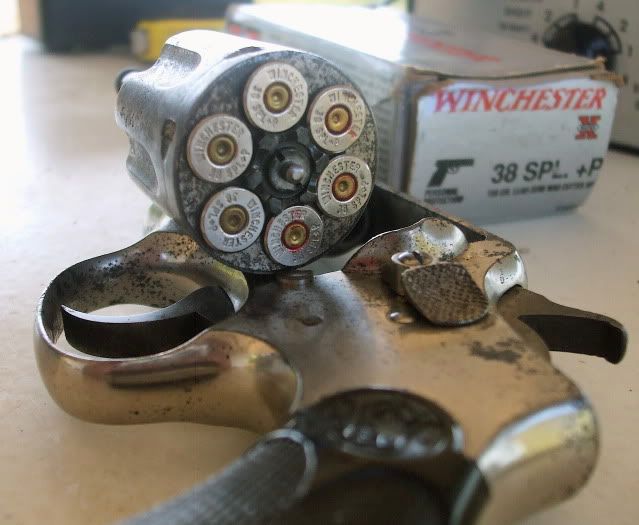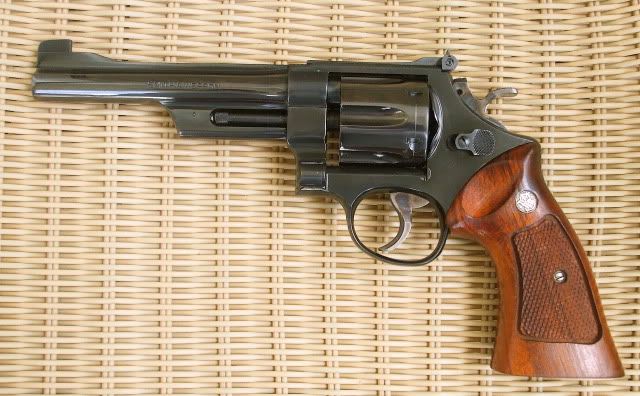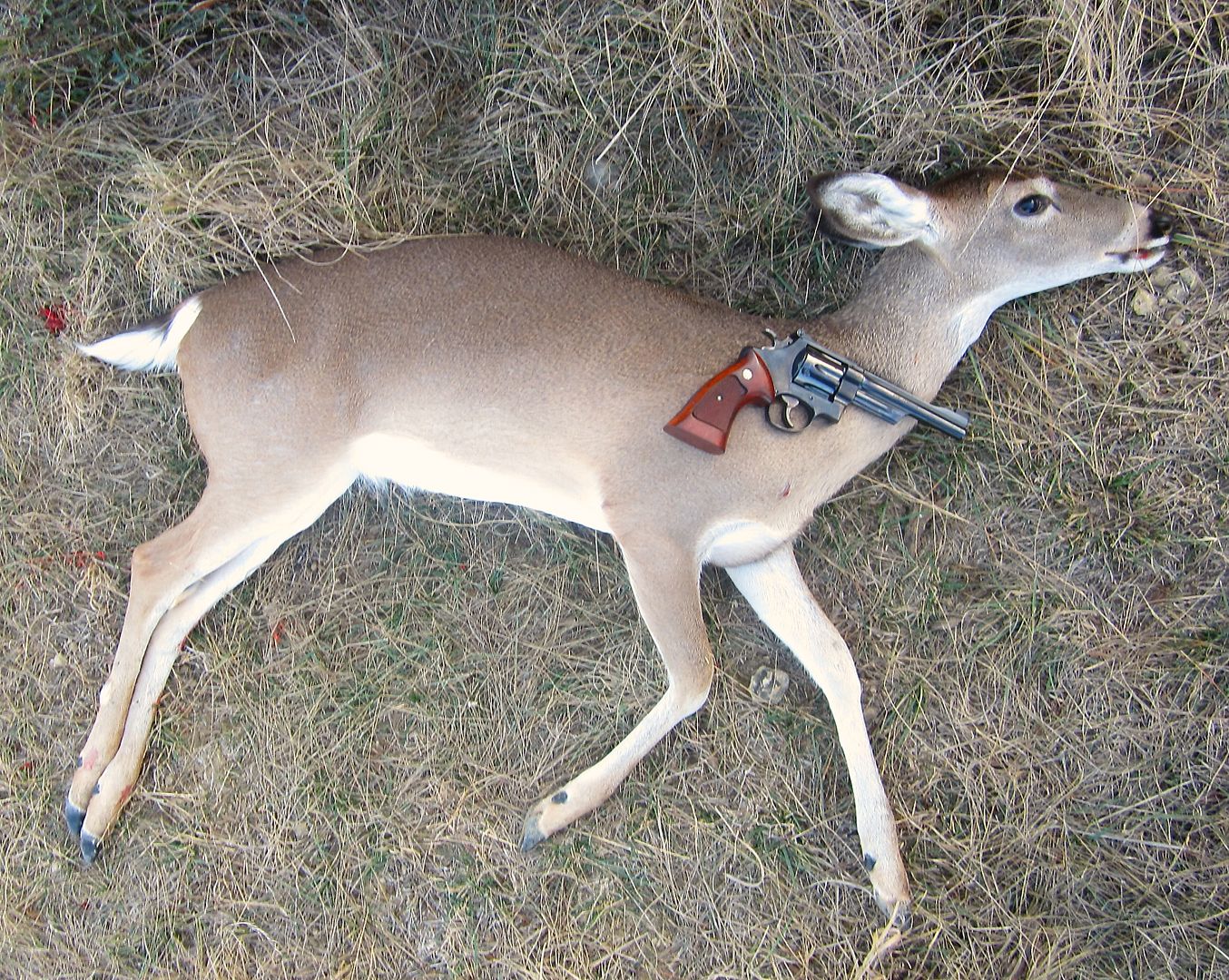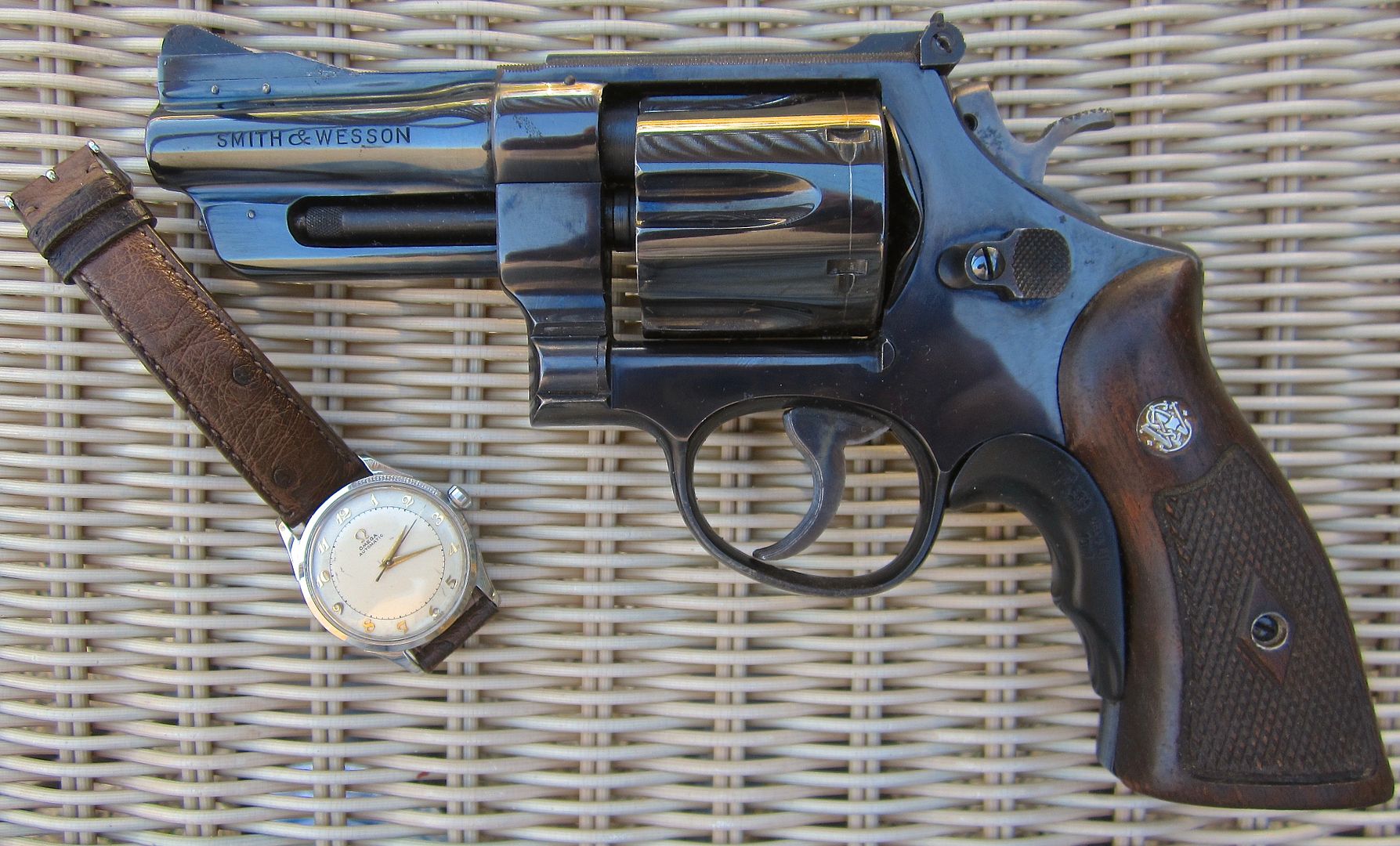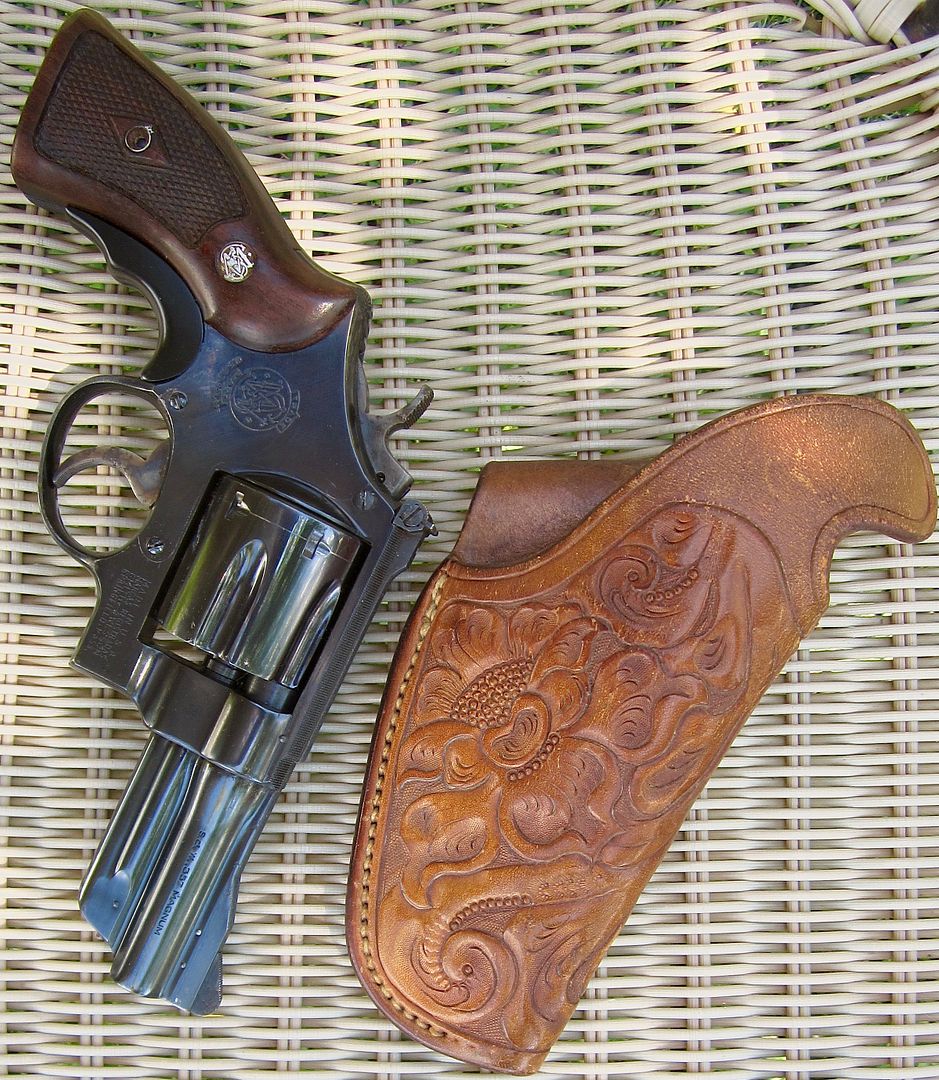I have wanted a M10 with the tapered barrel for some time now. Either a cosmetically challenged orphan for cheap, or spend more for a nice one I wasn’t really sure. I’ve passed on quite a few that I thought I should have purchased. It seems to never be the right time, the right deal, or the right gun.
Well I am glad I waited. I went to visit my Sister this weekend and was presented with this.
The right gun found me.
Smith & Wesson pre model 10, 4 screw C prefix, serial 341xxx. I figure 1954 or 55?
The 6” barrel has a little wear near the muzzle and a few minor scratches here and there, but it is really good shape. The original grips don’t have mark on them.
Now I need to get to the loading bench and pump out a bunch of 38spl.
Well I am glad I waited. I went to visit my Sister this weekend and was presented with this.
The right gun found me.
Smith & Wesson pre model 10, 4 screw C prefix, serial 341xxx. I figure 1954 or 55?
The 6” barrel has a little wear near the muzzle and a few minor scratches here and there, but it is really good shape. The original grips don’t have mark on them.
Now I need to get to the loading bench and pump out a bunch of 38spl.



